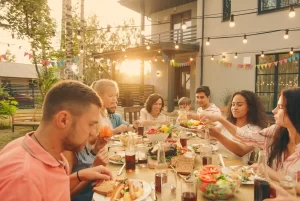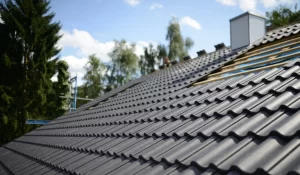How to Create a Sustainable Home Design

When it comes to building a new home, there are a number of different things to keep in mind. The first is to make sure the new home design is sustainable. A sustainable home is one that uses less energy, has a low carbon footprint, and reduces its dependence on non-renewable resources.
Reduces heating and cooling bills
Using energy efficient and sustainable home design is a great way to save money and reduce your carbon footprint. But it doesn’t have to be an expensive renovation. These tips can help you make the most of your resources while making your home more comfortable.
The first step in reducing your heating and cooling bills is to assess your energy usage. This can be done with free tools and calculators, and it will help you determine the best ways to cut energy use.
One of the easiest ways to increase your savings is by adjusting your thermostat. For example, lowering your temperature by 7 to 10 degrees for eight hours a day will save you about 10% on your heating bill.
You can also add insulation to your attic to improve your home’s efficiency. This will help you reduce the amount of heat entering your home in the summer. Even in colder climates, adding insulation will help you save about 20% on your energy costs.
Another great way to reduce your energy bill is to close your drapes and curtains at night. This will keep you cool in the summer and warm in the winter. Make sure to keep your shades at a reasonable height, and don’t forget to close them at sunset.
It’s also important to seal air leaks and gaps around windows and doors. Sealing gaps will save you about ten percent on your energy bill.
In addition, a smart thermostat will save you money. These Wi-Fi enabled devices can learn your habits and adjust to more energy-efficient temperatures when you’re asleep or away. They can also help you avoid overheating by using your local electricity suppliers’ preferential rates.
Reduces consumption of non-renewable resources
If you want to create a sustainable home design, you need to consider the impact of the energy you consume. Using renewable resources to power your appliances and lighting can reduce your carbon footprint. But non-renewable resources also have a negative effect on the environment. For this reason, it is important to find ways to make non-renewable resources last longer.
There are three main types of resources that are not renewable. They are: fossil fuels, metal ores, and earth minerals. Fossil fuels are made from buried organic material that has been compressed and heated. Metal ores are a type of mineral found in rocks. Earth minerals are a form of natural rock that contains mineral deposits.
However, these are all finite resources, meaning that they will not replenish in a short period of time. That is why we need to find more efficient ways of producing energy. One way of doing this is to use energy efficient vehicles. Vehicles like hybrid cars can reduce fuel consumption, making them a great option for a greener, more sustainable lifestyle.
Using solar energy for water heating and electricity is another option. Solar panels must have adequate sunlight to function properly. You can buy renewable energy certificates or ask your power company if you can obtain clean energy.
The United States has used a variety of sources to power its homes and industry for centuries. While it is true that the amount of energy available to us has increased over time, it is still important to use sustainable resources. This will help to reduce the environmental damage that we cause, as well as ensure that our supplies will be available for future generations.
Contributes to global warming
Using sustainable design to create a home isn’t a new concept. However, as the world heats up, embracing the green can be a savvy choice. Fortunately, it isn’t as costly as it may seem. Besides, you can retrofit an older home to be more eco-friendly.
The best way to save energy while also being environmentally conscious is to use renewable energy on site. For this to work, you have to deal with the underlying infrastructure. To be honest, this isn’t a particularly easy feat.
Another clever way to help the environment is to make your home more energy efficient. While it’s not possible to make your entire house 100% green, you can do the next best thing. With the right strategies, you can significantly reduce your electricity and gas bills. Moreover, your home’s carbon footprint will be greatly reduced.
One of the best ways to do this is to improve the efficiency of your home’s hot water system. This can be done with a simple DIY effort or by hiring a professional. It will definitely pay off in the long run. Also, you might want to consider installing solar panels or other energy efficient technologies. Lastly, you can do your part by avoiding plastics in your home. Some materials are naturally insulators.
As with any type of design, you should take your time and look for the tiniest details. Having a home that makes the most of its natural surroundings can do wonders for your physical and mental well-being. And while it might seem like a daunting undertaking, using a few smart strategies can make your home more sustainable in the long run. Using a green home can also make your neighbors jealous.
Is a container home an option?
A container home is a structure built from a used shipping container. Originally, these homes were used to protect cargo from the elements as it was transported across bodies of water.
Container homes are a relatively new construction technology. While the initial costs may be higher, these homes are a great alternative for those looking to live green. They can be constructed quickly and inexpensively.
When building a container home, it is important to follow all applicable local laws and regulations. In addition, you should be aware of the local climate. For example, if you live in a cold climate, you will need to insulate the bottom and sides of the container home. It’s also a good idea to mount the shipping container to the ground if you live in a storm prone area.
You will need a licensed electrician to complete the electrical work. Also, you will need to pay for cable, garbage pickup, and utilities. The cost of property taxes will be added to your monthly mortgage payment.
You should also ask about local regulations. Many municipalities have zoning laws that restrict the construction of these types of houses. If your home is built on land that isn’t zoned for such homes, you might have difficulty obtaining a building permit.
Some container homes are pre-built. Others are constructed from repurposed containers. Those who want to build their own may need to do so through a contractor.
Despite the fact that container homes can be affordable and environmentally friendly, they don’t always go according to plan. Some containers are unsafe and may carry dangerous chemicals. Other factors include the location of your home and how well the local municipal government handles building permits.







